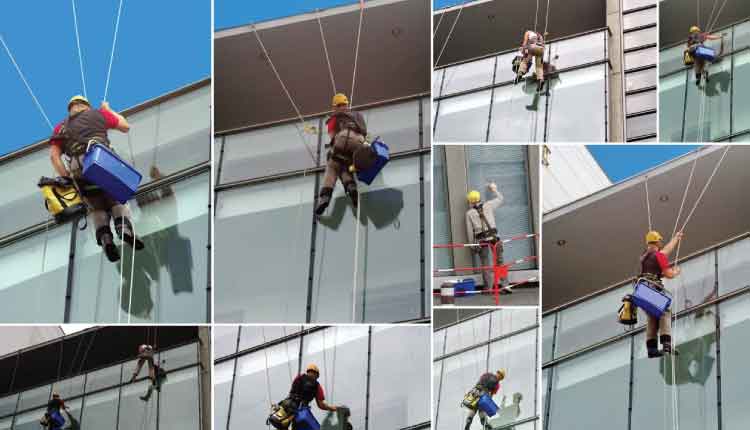Falling Objects
Wear a hard hat if there is a risk of head injury from falling or thrown objects (for example, own scenery, lighting equipment, tools, or tail ends of the cable). Although some companies provide hard hats, workers are responsible for providing their own approved hard hat, if necessary.
Hard Hat Requirements
- Keep your hard hat clean.
- Don’t use solvents to clean it; they weaken the plastic
- Don’t drill holes in your hard hat. Don’t paint it or apply stickers to it.
- Inspect it regularly. If it is cracked or damaged, replace it.
- Warn anyone not wearing a hard hat in an area where hard hats are required to keep clear
of that area.
Working at Heights
- Empty your pockets.
- Strap loose tools to your body.
- If you are using a hard hat, fasten the chin strap.
- If you need to work with loose tools, materials, or equipment (for example, when loading a counterweight arbor), make sure the area below is cleared of people and marked as a danger zone.
- Position objects as securely as possible so nothing gets accidentally knocked overboard.
- Avoid working alone at heights.
Low light levels
Install running lights backstage.
Mark unguarded edges, if possible, with conspicuous warning markers such as white tape, glow tape, LED lights, or laser markers. Don’t rely entirely on electrical illumination in case of a power failure.
Make portable lights (such as trouble lights, forehead ashlights, and mag lights) easily available to technicians working near unguarded edges.
Include the running crew and technicians in technical rehearsals so they can orient themselves to the conditions.
Slippery or Unstable Surfaces
Performers and technicians must wear footwear that protects against existing hazards. If it is not practicable for a performer to wear standard safety footwear, the employer must take other measures to protect them from injury — for example, fit costume shoes with nonslip soles, change the floor surface, or remove the hazards.
High voltage
Don’t violate the limits of approach when working near the energized high-voltage electrical equipment. In the Regulation, high voltage “means a potential difference (voltage) of more than 750 volts between conductors or between a conductor and ground.”
Strike
When assessing risks, including the work that will be done at heights when striking. Circumstances can be more hazardous during the strike: there is often a sense of urgency, crew sizes may have changed, all departments may be working at the same time, and fatigue is often a factor.
If the install required special equipment, make sure you have it for the strike. Ensure that stairways and other access methods are left intact until workers do not need access to the areas they serve.
